Modestine V at the crossroads
We arrived in Nice via the ferry from Bastia in Corsica on a beautiful spring day and strolled along the waterfront of Vieux Nice where holidaying crowds had congregated on the stony beach. After picking up Modestine V, a new and spacious Peugot Partner, we turned inland and headed for the Alpes Maritime. The foothills of the Alps reach down tothe northern outskirts of Nice and form a majestic barrier.The road was one of the steepest we have ever tackled even compared to Corsican roads with dozens of hairpin bends and sheer drops to the valley below. These roads often follow the route of mule tracks between valleys
Passing through the small town of Sospel we eventually reached the extraordinary perched village of Saorge which stood guard over the valley leading to the Italian border. Almost nothing in the village is level with verticl stairways leading through arches and along alleys past medieval looking houses.
The church and chapel roofs shimmer with gold Nicois tiles and the view over the village from the highest pathways is wonderful
The village appeared to have a somewhat alternative lifestyle population living in houses which climbed ever higher above the village entrance. From the posters in the square, it is obvious that there is a very active cultural life throughout the year.
We eventually found a room in a lovely old house perched on the edge of a cliff looking down to the river. It had recently been restored to provide several charming rooms with elegant furniture and fittings.
A walk beyond the village revealed extensive terraces which would once have been used to grow crops, orchards and graze animals although most of them were no longer in use
The Monastere de Saorge was formerly a Franciscan convent founded in 1633 and now a residence for writers who come here for the peace and inspiration of the mountains and beautiful surroundings.
The convent boasts a number of exceptional decorative elements including 17th century frescoes and sculpted wood panelling
The kitchen gardens illustrate the use of terraces and are irrigated by chanelled water.
Some of the doors and windows in the village were painted with whimsical rural scenes
This mouflon was so lifelike that only the realization that it did not move from its dramatic perch above the village revealed that it was a scupture
Mouflon sculpture
The village of Roubion was yet another extraordinary perched village, reached after driving through a red gorge and zig zagging up a challenging mountain road.
In Provence, blue irises are seen everywhere in spring
A spit turned by water
The Saturday market in Apt is one of the liveliest in Provence and takes over the narrow streets and squares of the centre of the town which is nestled beneath the northern slopes of the Grand Luberon
Asparagus - green and white
Strawberries from Carpentras - a variety we liked best was Mara de Bois, recommended by Valerie, owner of our first gite who left a punnet as a gift for us together with a bottle of local rose, two small goat's cheeses from the village and roses in a vase on the table. Gite rentals invariably include a small welcome gift from the owner
Paella is usually to be found at the larger markets and it is fascinating to watch the preparation in huge pans
The ancient village of Saignon rises like an immense fort with natural turrets of rock and a view over the surrounding countryside on the north side of the Montagne de Luberon about 4km from Apt. It is the closest village to our gite and Valerie had a small business making and selling hats in the village where the houses, many restored, are set among the rocky outcrops on which the castle once stood. The 360o views from the Rocher de Belleview and castle ruins is breathtaking.
Le Petit Cave, Saignon
We celebrated our 40th wedding anniversary at the local restaurant Le Petit Cave mentioned in the Michelin guide.
Delicious food beautifully presented but we both felt that perhaps we had enjoyed the Sunday lunch at a nearby Ferme Auberge more. These places, identified by a sunflower symbol, are listed by Gites de France and serve food grown or reared on or near the farm, often for Sunday lunch, so tend to be very local in character and very popular with people from the nearby area.
Dinner at the gite was an altogether more casual affair! With so much wonderful produce from the market in Apt, self catering was a pleasure and Vincent's tomato sauce was often on the menu and we enjoyed eating out in the garden.
The nearby Canon d'Oppedette offered wonderful walks all around the rim and many species of wildflowers could be seen
Orchids
By the early 20th century, the old defensive site on the steep slopes surrounding the castle has been abandoned and it was in ruins. It was rediscovered by artists including Chagall and Vasarely who undertook the restoration of the castle and in 1970 opened his Didactic Museum in the Renaissance interior.
The Village de Bories, a walled enclosure which contains dry stone buildings constructed in a mix of unusual shapes lies 4km from Gordes. Curving pyramids and cones cleverly designed so that the rain runs off and the temperature in the interiors remains constant
The bories have been constructed in this area for hundreds of years using the quantities of stone found in all the fields although most date from the 18th century and were inhabited until the early 19th century. Usually the bories are found seperately and it is unusual to see an entire village as can be seen here.
May is a wonderful month to visit Provence and wildflower meadows can be seen everywhere.
Ochre quarrying has been practised around the Rousillon area since prehistoric times producing the natural dye which gives a range of colours from pale yellow to blood red. It is possible to walk along paths through an area where the rock was mined and strange shapes have been left in the valley

The abandoned hilltop village of Fort de Buoux stands on the northern flank of the Grand Luberon massif overlooking a canyon forged by the once powerful river Aiguebrun.
Numerous relics have been found in the Buoux Valley and anchorite monks survived in caves and niches in the vertical cliff face inthe early days of Christianity.
In the 1660's the fort was demolished on the orders of Cardinal Richelieu for being a centre of Protestantism
Viens
It must be 12 years or more since we last visited la
Roche-sur-le- Buis, a village perched high on the side of a hill beneath its
ruined castle rising from a sheer crag. I
had forgotten how very beautiful this area of the Drome is and how favourably
it compares with highly scenic places visited recently in Corsica, the Alpes
Maritime and the Luberon. The fields below the village are full of olive and
cherry trees and the tilleuil is flowering as it was when we first made our way
up the steep hill and into the square.
We spent several holidays at Wendy Castleden’s
somewhat eccentric house, converted from an old building which spans an arch and
reaches up over several levels to a flat roof with wonderful views in every
direction over the valley and mountains.
A number of friends joined us during our time at la Roche and we thought
that it would be interesting to know how the village is faring.
Jan and Bryn were
with us on the first trip, quickly becoming experts in selecting mountain cheeses
and tapenade from the markets in Vaison la Romaineand Nyons. The Latchems joined us for a few days and
Colin produced lovely drawings of the village and surroundings which were much admired.
Ray and Susan arrived for a few days- Ray’s enquiries regarding the lack of local birdlife went something like “are you interested in birds, I don’t see many around” to which the local wit responded “oh yes, I love birds, I especially like them in a pie!”
Ray and Susan arrived for a few days- Ray’s enquiries regarding the lack of local birdlife went something like “are you interested in birds, I don’t see many around” to which the local wit responded “oh yes, I love birds, I especially like them in a pie!”
Chris and Jurg joined us from London with Jurg in
his element with the wonderful local ingredients, creating delicious dishes and
enthusiastic about the more exotic offerings in the local restaurants – tete de veau and pieds de paquets not to mention donkey salami. I recall a pan of the local sausage curled around in one piece in the frying pan - delicious!
Cara was there, an essential part of the
group with her then boyfriend Matt, already an enthusiastic foodie and always
ready to create something new in the kitchen which was conveniently separated
from the bathroom by a curtain. We all
gathered on the roof terrace in the evening for long dinners accompanied by
copious amounts of excellent wine including the rose from St Jalle in the next
valley.
We had some wonderful trips into the surrounding countryside exploring
perched villages, enjoying traditional Sunday lunches, markets and walks. One particular walk from Le Poet Percip at the end of the road led down the mountain which was covered in wild thyme, rosemary and other fragrant herbs past cherry trees eventually emerging behind the castle above the village. The views were amazing!
Under a brilliant blue sky, the village looks prosperous and colourful with flowers in bloom everywhere. More houses have been renovated with some lovely buildings high above the village and I would imagine that many are now holiday homes.
Sadly the bar in the square is closed - it was a vibrant focus of village life and a place where one could meet the locals, share a drink and enjoy a pizza when the van made a weekly visit. When Vincent asked Denis, a relaxed local who spent much of his time at the bar what he did for a living, Denis looked astonished and retorted “je vie!”
The path to
the castle winds steeply up past charming stone houses complete with
climbing roses and the wonderful faded
paintwork in green and blue so typical of southern France.
The ancient
church occupies a square opposite which a small graveyard has been transformed
into a garden of rememberance full of
flowering shrubs. Before too long
lavender, hollyhocks and buddlea will complete the delightful picture.
The castle at Entrechaux
The site of Vaison-la-Romaine has been settled since the Bronze Age but its name stems from five centuries as a Roman town.We made our way to the market at Vaison la Romaine
early the next morning when the streets were quiet and vendors busy setting up
their stalls. Imagine our surprise when the Romans arrived!
The market is justly famous and the produce is colourful,fresh, and tempting. It is such a pleasure to be self catering and to fill a basket with tomatoes, salad, cheese, tapenade, cherries and strawberries.
Even the
most simple lunch of bread, cheese and tomatoes is a feast and the sight of a
picnic never fails to elicit a smile and a greeting of ‘bon apetite’ from
passers by. Pate, cheese, tomatoes and bread carried in a Margaret River Venison bag!
Even the tough lycra clad cyclists climbing the steep slopes of Mt Ventoux turn and wave at the sight of us spreading a crusty chunk of bread with pate. The French really are passionate about food!
Even the tough lycra clad cyclists climbing the steep slopes of Mt Ventoux turn and wave at the sight of us spreading a crusty chunk of bread with pate. The French really are passionate about food!
Vaison is famous for the extensive Roman ruins
dating back to the 2nd century BC when it was know as Vasio
Vocontiorum. The Roman city is split into two districts, Puymin and La Villasse and at the former an opulent mansion the Villa de Paon and a Roman theatre have been uncovered.
Two important archaological sites can be seen in the centre of the town and include the remains of substantial houses decorated with mosaics, colonnaded streets, public baths, the theatre (still used for perfomances) and an aqueduct which brought water down from Mt Ventoux.
From the modern town a bridge leads to the gateway of the medieval town on the opposite bank which dates from the 6th century.
In the 12th century the counts of Toulouse built a castle on top of the hill.
A series of photographs had been mounted on the walls depicting life 50 years ago
A birthday celebration in the medieval quarter of Vaison
Two important archaological sites can be seen in the centre of the town and include the remains of substantial houses decorated with mosaics, colonnaded streets, public baths, the theatre (still used for perfomances) and an aqueduct which brought water down from Mt Ventoux.
From the modern town a bridge leads to the gateway of the medieval town on the opposite bank which dates from the 6th century.
In the 12th century the counts of Toulouse built a castle on top of the hill.
A series of photographs had been mounted on the walls depicting life 50 years ago
A birthday celebration in the medieval quarter of Vaison
The Cathedrale Notre-Dame-de-Nazareth
is a beautifully simple and elegant stone church which contain the tomb of St
Quentin who lived in the 6th century. It was built over the Roman remains
and the medieval cloisters contain recycled columns from the ruins.
The peaceful cloister contains carved columns and sarcophagi surrounding
a small garden.
Le Jardin de Princes, the gite at Cairanne. looks over the vineyards towards the city of Orange with its famous Roman Theatre and Triumphal Arch
After a morning exploringthe area, lunch and a
rest with doors and windows closed against the heat until the temperature drops and then perhaps a
visit to the AOC Cotes de Rhone caves of our local villages Rasteau and Cairanne.
NYONS
Nyons is synonymous with olives and all manner of olive products can be bought at the colourful Thursday market
LES GLYCINES
Our final house was also the best we have had during our years of renting weekly accommodation in France. Les Glycines belongs to the Dunstons who live in Canada and is very much a family home, filled with books, art and beautifully decorated and equiped. The owners comment that they have left the house just as it is when they are living there and we certainly felt very much at home during the week we spent at St Anastasie.
There are a number of comfortable outdoor areas including two terraces and a charming courtyard complete with fountain. The weather was mild and pleasant although we are told that temperatures in June can reach 35C.
Breakfast and dinner were usually taken on the roof terrace
The village is only 15 minutes from the beautiful town of Uzes which has a history dating back to pre Roman times. In 50AD the Romans decided to tap the source of the Eure to provide water for the city of Nimes. They built a 50km long aqueduct, the main part being the Pont du Gard which crosses the River Gardon.
The vines in this area grow in very stony ground and the large rocks retain the heat which benefits the vines
Saint Fermin, 4th Bishop of Uzes, was venerated for having performed miracles during the plague in the Middle Ages and his remains can be seen in the Saint Theodorit Cathedral in Uzes
The charming town centre of Uzes with its arcaded squares
One of the most popular markets in southern France takes place here on Saturday and Wednesday complete with numerous cafes and musicians
Streetscapes in Uzes
The Maison Carree, an elegant Roman temple built around AD2, is one of the best preserved in the world with finely fluted Corinthian columns and a scupted frieze
The story of St Quentin La Poterie began in Neolithic times. The Romans later developed pottery production and during the 14th century, the village manufactured tiles for the Palais des Papes in Avignon. After a period of decline in the 20th century around 20 pottery workshops now exist together with a Museum of Mediterranean Pottery.
9th century church at Gattigues
A last dinner on the rooftop terrace at Les Glycines
Asparagus was usually on the menu since there is an abundance at this time of year
For us, Saturday is moving day and over the years we have moved weekly from one gite to another - on one visit over a period of 3 months which took us all around France. We have stayed in all manner of accommodation but none of them have been as charming and comfortable as Les Glycines and we were sorry when the time came to leave.
The extraordinary troglodyte Abbaye de Saint-Roman near Beaucaire.
Hollowed out of the rock on top of a hill overlooking the Rhone by monks and hermits the abbey was occupied from the 6th to the 16th centuries. Hunters are thought to have visited the site around 60,000 years ago.
Dozens of burial sites have been carved out of the stone
Carved seats in the chapel
Le Monastere St. Paul-de-Mausole
Vincent Van Gogh received psychiatric treatment (1889-1890) at the monastery in St-Remy-de-Provence where he completed more than 150 paintings
The surrounding gardens became his main subject and some of his best known paintings including The Starry Night, Irises and The Bedroom were painted within its walls and gardens
He was given one room and allowed to use another one as his studio and, accompanied by a guard, sometimes went outside the hospital to paint the surrounding landscape
The garden outside his window, the cloister, pine trees and irises were favourite subjects
GLANUM
Next to the monastery stands the archaological site of Glanum. The first Gaulish inhabitants settled here between 600BC - 700BC. A Celtic god, Glan lived in the waters and the spring was believed to have healing properties
Subsequent relations with the Greek world brought wealth and the construction of buildings in the Hellenistic style in the 2nd and 3rd centuries BC. Ganum then became a Roman colony in the early years of the reign of Augustus (63BC - 14AD)
Triumphal Arch of Glanum
A small Corinthian temple dedicated to Valetudo, the Roman Goddess of health
Twin temples dedicated to the cult of the Emporer's family
AIX EN PROVENCE
Paul Cezanne
Founded by the Romans in 103BC aix became the capital of Provence by the end of the 12th century. It was renown as a centre of art and learning and continues to celebrate that tradition
A small Sunday market in a square in the old town centre of Aix with beautiful seasonal fruit and vegetables
Succumbing to temptation once again!
Flaneries d'Art Contemporain
dans les jardins aixois
A weekend exhibition of art held in gardens around the centre of Aix en Provence
Lunch was served at the Hotel Le Manoir, formerly a Franciscan convent, which also exhibited works in the 14th century cloister
Mt Ste Victoire
The Mas St Anne, a 250 year old farmhouse with wonderful views over the vineyards towards the mountain











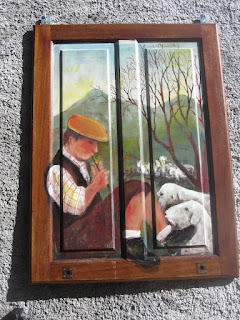


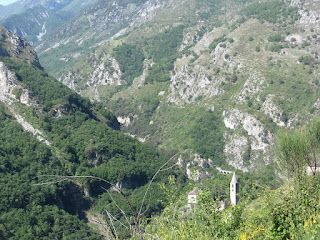




















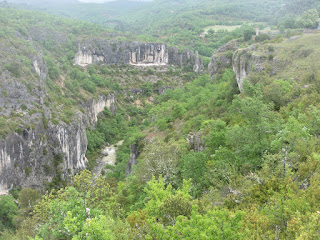
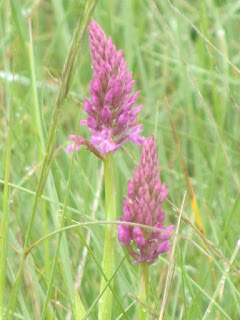









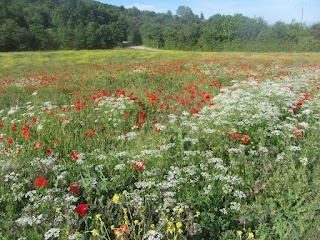


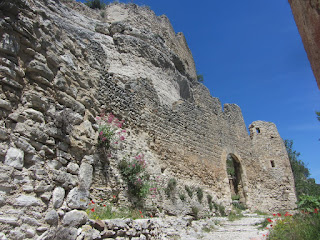








































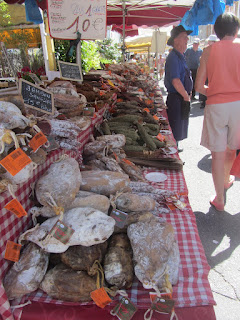
































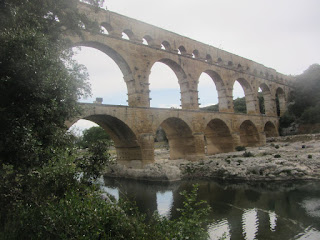

















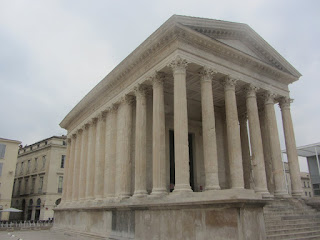








































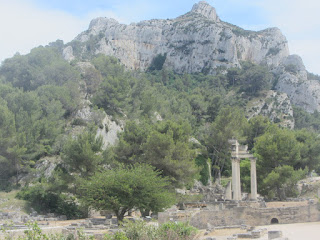






















No comments:
Post a Comment